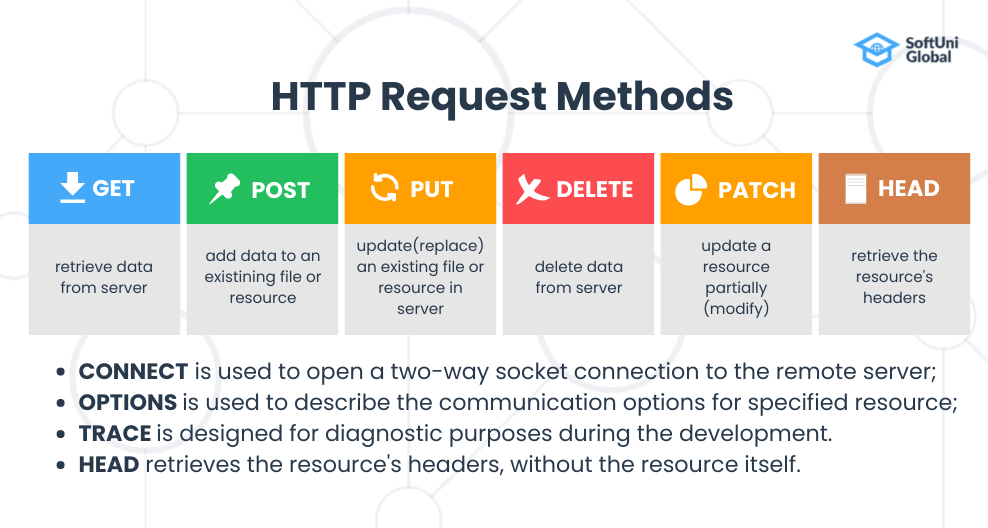HTTP Methods
 Namya Shah
Namya Shah
- HyperText Transfer Protocol (HTTP) is designed to enable communications between clients and servers.
The protocol works by clients sending requests to the servers and servers responding to the requests. We do CRUD operations (Create, Read, Update, Delete) by sending HTTP requests with different HTTP methods, sometimes called HTTP verbs. GET and POST are the most frequently used HTTP methods.
PUT Method
With the PUT request method, we can update an existing resource by sending the updated data as the content of the request body to the server. The PUT method updates a resource by replacing its entire content completely.
PATCH Method
PATCH is another HTTP method that is not commonly used. Similar to PUT, PATCH updates a resource, but it updates data partially and not entirely.
GET Method
If we want to retrieve data from a resource like websites, servers or APIs, we send them a GET Request. For example, we send a GET request to the server if we want a list of our customers or a specific customer.
POST Method
The POST method creates a new resource on the backend (server). The request body carries the data we want to the server. It is neither a safe nor idempotent method. We don’t expect to get the same result every time we send a POST request.
CONNECT Method
The CONNECT method is for making end-to-end connections between a client and a server. It makes a two-way connection like a tunnel between them. For example, we can use this method to safely transfer a large file between the client and the server.
OPTIONS Method
We use this method to get information about the possible communication options (Permitted HTTP methods) for the given URL in the server or an asterisk to refer to the entire server. This method is safe and idempotent.
TRACE Method
The TRACE method is used to perform a message loop-back test that tests the path for the target resource (useful for debugging purposes).
DELETE Method
As the name suggests, the DELETE method deletes a resource. The DELETE method is idempotent; regardless of the number of calls, it returns the same result.
HEAD Method
The HEAD method is similar to the GET method. But it doesn’t have any response body, so if it mistakenly returns the response body, it must be ignored.
Type of HTTP Methods
GET
POST
PUT
PATCH
DELETE
HEAD
OPTIONS
TRACE
CONNECT
Subscribe to my newsletter
Read articles from Namya Shah directly inside your inbox. Subscribe to the newsletter, and don't miss out.
Written by

Namya Shah
Namya Shah
I am a developer who is very enthusiast about technology and coding.